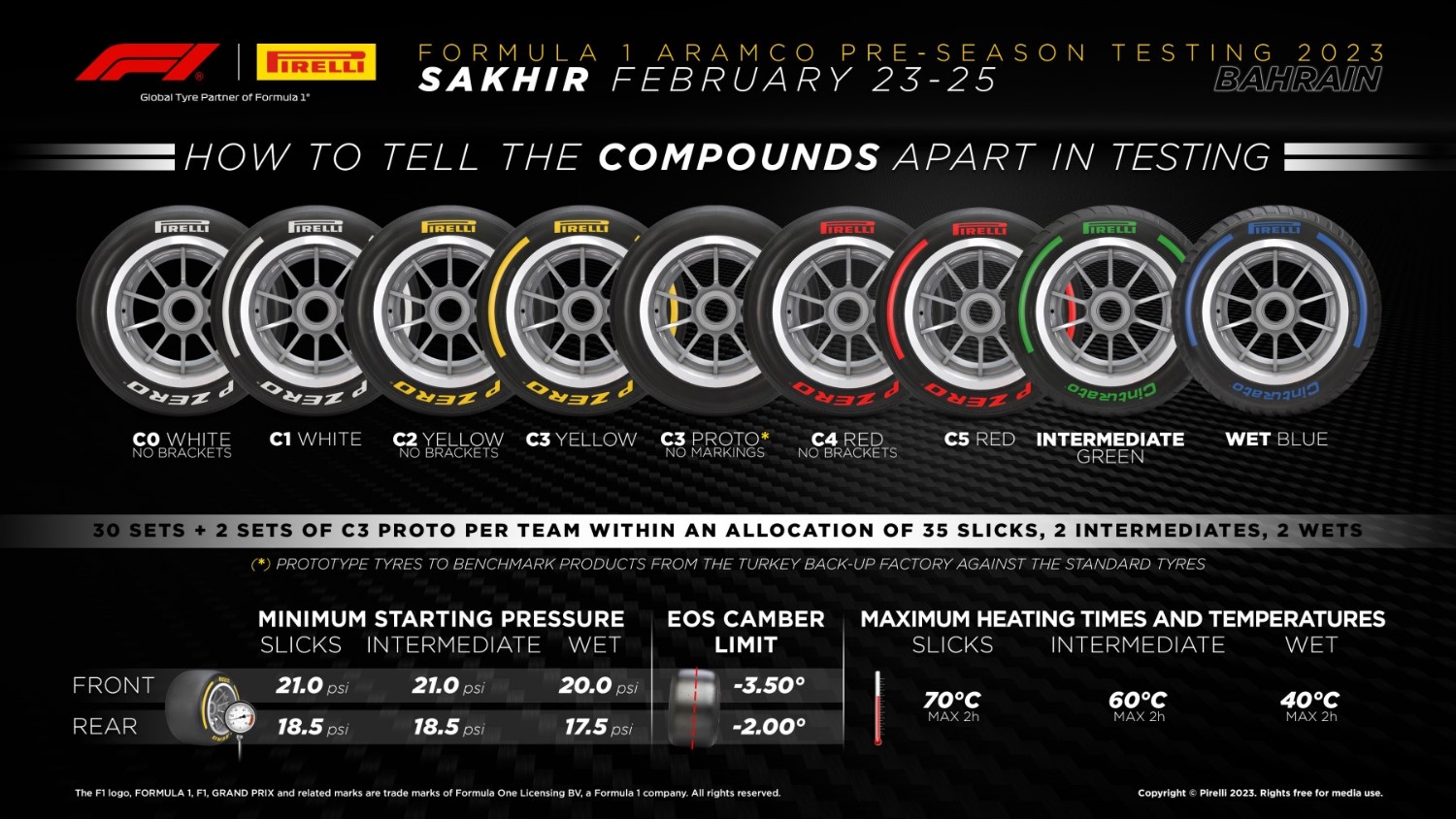F1: Pirelli to bring all eight 2023 tires to Bahrain test
By Mark Cipolloni.
This year, the number of compounds that Pirelli can nominate throughout the season has increased to six because a new compound in the hardest range has been created. They’re numbered from zero to five, from the hardest to the softest, with the letter ‘C’ standing for ‘compound’.
All six will be available to the teams over the next three days in Bahrain for preseason testing. In addition, the Intermediate and full-wet tires will be available on the slim chance it might rain.

COMPOUND 0
Last year’s C1 tire has become the C0 for 2023. This is the hardest tire in the range, which will be nominated for the circuits that take the most energy out of the tires. It’s designed to provide maximum resistance to heat and extreme forces, being capable of running very long stints, but this comes at the expense of peak performance.
COMPOUND 1
This new-for-2023 compound slots in between last year’s C1 and C2. Based on the latter, it was created to reduce the performance gap between what had previously been the two hardest compounds in the range.
COMPOUND 2
The third-hardest compound remains very suited to the faster, hotter and more abrasive circuits. The harder compounds are sometimes nominated for new circuits, providing a conservative selection so that tire loads can be verified in real-world race conditions for the first time.
COMPOUND 3
This compound is extremely versatile and can be used as either the hardest, the middle or the softest of any three-compound selection. With an excellent balance between performance and durability, this is well-suited to a wide range of conditions.
COMPOUND 4
This compound is designated to work well on low-severity circuits, where quite a quick warm up is required in order to reach peak performance as soon as possible. This tire is used extensively throughout the season.
COMPOUND 5
These are very softest tires in the range, designed for the slowest circuits with low wear and degradation where maximum mechanical grip is required from the rubber. These are normally seen at street circuits or where the asphalt is exceptionally smooth.